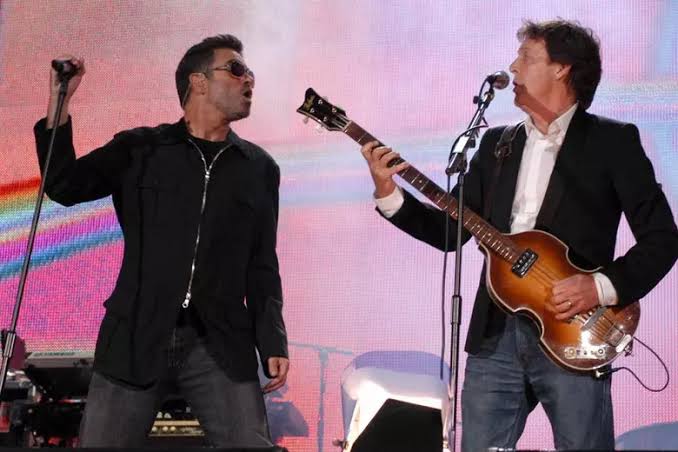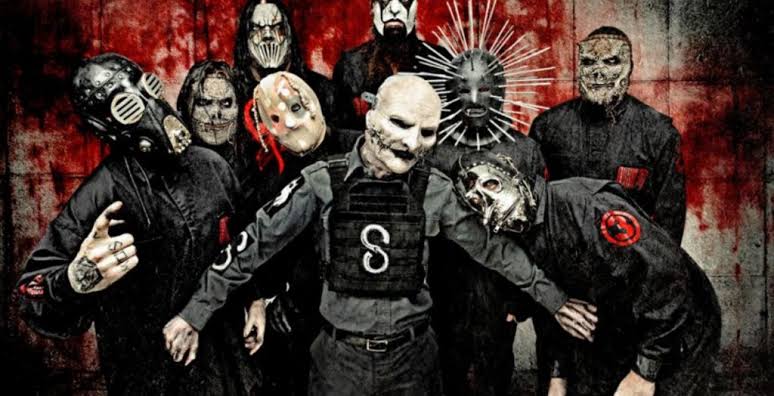When George Michael Wrote ‘Heal The Pain’ As A Tribute To His Idol Sir Paul McCartney, He Couldn’t Have Imagined That Over A Decade Later, He’d Be In The Studio With The Beatles Legend, Recording A Duet Version Of The Song! The Original Is A Hidden Gem, But This Iconic Collaboration Takes It To A Whole New Level, With Their Harmonizing Vocals Creating A Beautifully Seamless Blend. George Always Dreamed Of Sharing A Song With McCartney, And When He Did, It Was Pure Magic—A Moment Of Musical History That Fans Won’t Forget….
When George Michael penned “Heal The Pain,” it was more than just another song; it was a heartfelt tribute rooted in admiration and respect for one of his musical idols, Sir Paul McCartney. Released in 1990 as part of his album “Listen Without Prejudice Vol. 1,” the song showcased George’s soulful voice and songwriting prowess, but it also carried an emotional weight that resonated deeply with fans and critics alike. Inspired by McCartney’s enduring influence and legendary status, George crafted a track that aimed to evoke healing, hope, and unity—themes that transcended musical boundaries and touched listeners on a personal level.
At the time of its release, “Heal The Pain” was appreciated for its lyrical sincerity and melodic beauty, yet it remained somewhat of a hidden gem in George Michael’s expansive catalog. It wasn’t a chart-topping hit, but it gained a quiet following among fans who admired its emotional depth. For George, the song was a labor of love, a reflection of his admiration for McCartney’s melodic genius and pioneering spirit. Little did anyone know that, over a decade later, this personal tribute would evolve into a historic collaboration that would captivate music lovers around the world.
Fast forward to more recent years, a remarkable event unfolded that seemed almost impossible in the realm of musical history: George Michael found himself in the studio with Sir Paul McCartney, recording a duet version of “Heal The Pain.” This moment was nothing short of legendary—a dream realized after years of admiration and aspiration. The collaboration was a testament to the enduring power of music as a unifying force, bridging generations and styles to create something truly special.
The recording session was a convergence of two musical giants, each bringing their unique talent and emotional depth to the project. George’s expressive vocals intertwined seamlessly with McCartney’s iconic voice, creating a beautifully seamless blend that elevated the song to new heights. Their harmonizing vocals added layers of richness and warmth, transforming “Heal The Pain” from a heartfelt solo into a shared musical experience. The studio atmosphere was filled with mutual respect and genuine camaraderie, as these two artists, separated by decades of musical evolution, connected through their shared passion and love for the song.
This collaboration was more than just a studio session; it was a moment of historical significance. For fans, it was a rare glimpse into the personal relationship and mutual admiration between George Michael and Sir Paul McCartney. It also underscored the timeless relevance of the song’s message—about healing, forgiveness, and hope—resonating even more profoundly when delivered by two of the most influential voices in music history.
The significance of this duet extended beyond its musical excellence. It symbolized the bridging of eras—the contemporary pop sensibilities of George Michael blending with the classic craftsmanship of Sir Paul McCartney. Their voices complemented each other perfectly, showcasing how music can serve as a universal language that brings people together, regardless of age or background. The collaboration became an iconic moment, one that fans and critics alike would cherish for years to come.
For George Michael, sharing a song with McCartney was a dream come true. He had always admired McCartney’s songwriting genius, his melodic inventiveness, and his ability to craft songs that endured through generations. When the opportunity arose to record a duet, it was a moment of pure magic—an affirmation of his musical journey and a testament to the power of respecting and celebrating one’s influences.
This duet also served as a poignant reminder of George Michael’s own legacy—a singer, songwriter, and performer who had consistently sought authenticity and emotional truth in his music. His collaboration with McCartney not only honored his idol but also demonstrated his own evolution as an artist willing to embrace new collaborations and explore deeper artistic connections.
Fans who have listened to the duet often describe it as a transcendent experience. The voices of two legends melded together create an emotional resonance that is both powerful and touching. It embodies the spirit of unity, healing, and shared passion that “Heal The Pain” originally aimed to convey. This collaboration stands as a testament to what can happen when musical icons come together, transcending the boundaries of time and genre to create something truly memorable.
In conclusion, the journey of “Heal The Pain” from a heartfelt tribute to a legendary artist to a historic duet exemplifies the enduring magic of music. George Michael’s admiration for Sir Paul McCartney culminated in a moment that fans will cherish forever—a rare and beautiful convergence of talent, emotion, and legacy. It’s a shining example of how music can bridge generations, inspire dreams, and forge moments of pure magic that stand the test of time.


